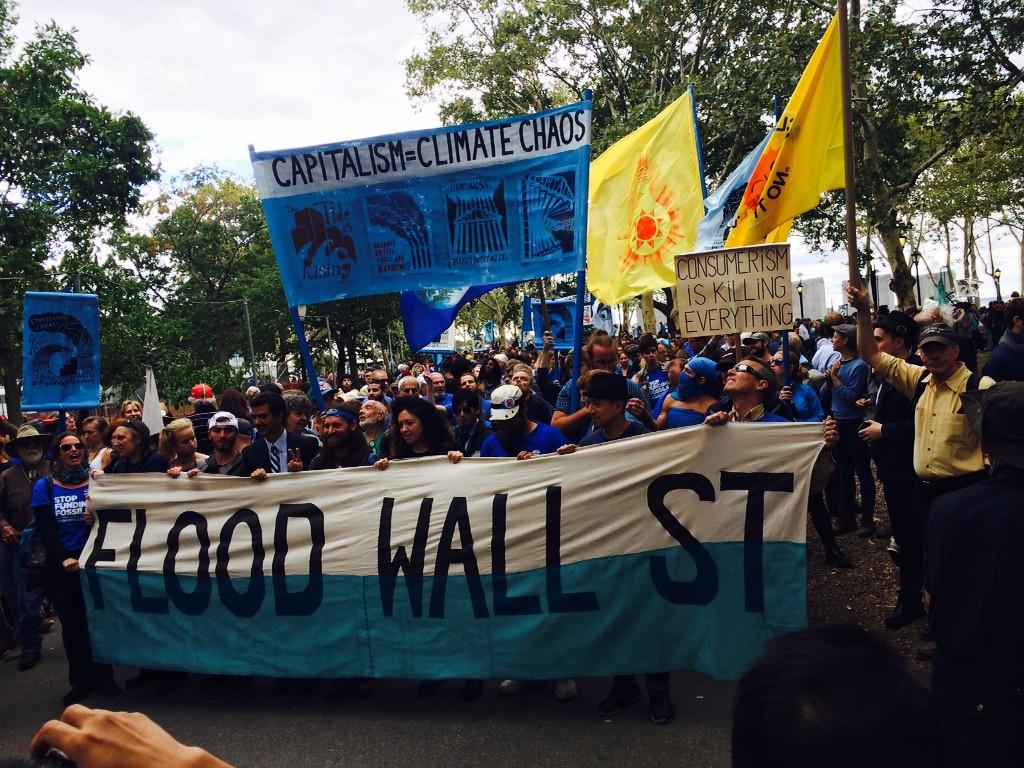
People gonna rise with the water,
We’re gonna calm this crisis down,
I hear the voice of my great grand-daughter,
Saying “shut down Wall Street now!”
I’m really grateful. I’m really grateful to be part of a mass movement that dreams big and takes bold action.
Back in September, I woke up on a crisp clear New York morning and joined 3,000 people to shut down the city’s financial district as a part of Flood Wall Street.
Responding to a call from the Climate Justice Alliance for civil disobedience actions to add urgency to the People’s Climate Mobilization, New York organizers issued an invitation to Flood Wall Street. As both the symbolic and literal epicenter of global capitalism, Wall Street’s main players were to be held accountable for funding the current climate crisis as well as actively opposing organized efforts to wean our economy off fossil fuels.
That morning, we gathered at Battery Park in Lower Manhattan, just a few blocks from Wall Street, with the aim of disrupting business as usual. Opinion-makers like Naomi Klein, Chris Hedges, Rebecca Solnit, as well as leaders from frontline communities from around the world spoke to the crowd while organizers convened tactical meetings, lawyers gave legal briefs and people organized into affinity groups. My (fairly large) affinity group that day was constituted of RAN co-workers and friends from Utah, North Carolina, Philadelphia and New York. We were part of a second block that moved into the street as soon as fences were dismantled. The entire march swarmed into Broadway from Battery Park. Thousands surrounded the Wall Street bull and sat in. The occupation quickly turned into a festival of resistance with songs, chants, the deployment of a 300 foot long banner and a bouncing carbon bubble (later popped on the bull’s horn by the NYPD).
We occupied Broadway for the morning and afternoon, and then moved towards the streets that led to the stock exchange on Wall Street. Riot police had barricaded the entrance to Wall Street and activists tried to move past their formations. Eventually, Flood Wall Street entered into a multi-hour stand-off with the police that led to about 100 people being arrested after they refused to leave the street.
On September 22nd, we created a convergence of movement spaces that empower climate justice activists to fight back against power-holders and be critical of existing institutions while building solidarity and our own power. Most importantly we facilitated a bigger and bolder action for North American climate and climate justice movements. Organizers set out to bring the anti-establishment climate movement to the streets of New York. Just as anti-extraction activists had blockaded oil trains in Washington and Oregon and tar sands fighters had stopped work on the Utah tar sands, Flood Wall Street disrupted business as usual for the financial district of the world’s largest economy.